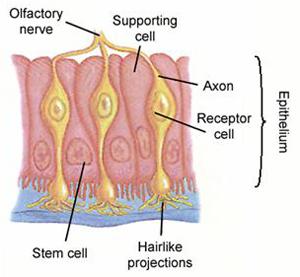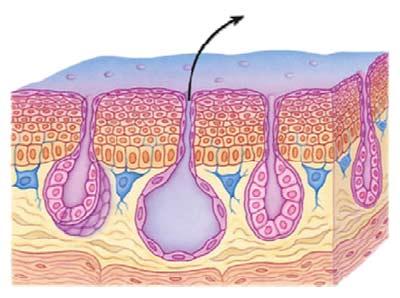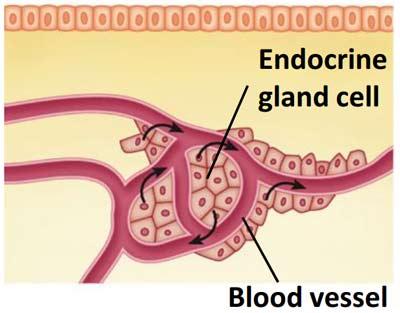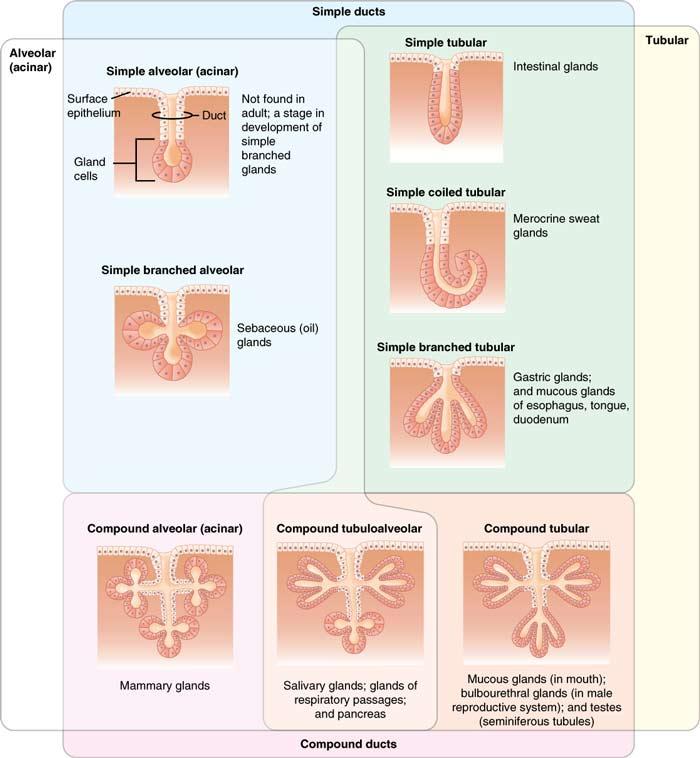Specialized Epithelial Tissue are a class of epithelial tissues that have very specific and specialized functions and structures. This tissue is composed of cuboidal, columnar, ciliated columnar epithelial cells. These are following types:
Ciliated Specialized Epithelium
This tissue is composed of long, elongated columnar epithelial cells. Each cell bears numerous cilia at the free surface, i.e. known as brush border.
Location- This tissue is found in lining of trachea, bronchi, spermduct, oviduct, etc.
Function- It helps in conduction of mucus and other substances.
Sensory Specialized Epithelium

This tissue is composed of modified form of columnar cells and long, elongated neurosensory cells. Tips of each neurosensory cell consists of hair like structure i.e. known as sensory hairs which are sensitive in nature.
Location- This tissue is found in lining of tongue, nasal cavity and internal ear.
Function- It perceive external as well as internal stimuli and conducts impulses.
Germinal Specialized Epithelium
This tissue is composed of cuboidal epithelial cells. This tissue is found in lining of gonads like testes in male and ovaries in female . This tissue helps in formation of gametes like spermatozoa and ova in gonads by the process of gametogenesis.
Glandular Specialized Epithelium
Glands in a vertebrate body may originate from ectoderm, mesoderm or endoderm. Cells of the glands are secretary in nature. Zymogen granules appear in the cytoplasm of secretary cells. A gland can be classified on the basis of presence and absence of ducts , number of cells and shape of secretary unit-
A. Glands based on presence and absence of ducts-
i. Exocrine glands- Glands with ducts and secretes enzymes e.g. salivary tear, gastric adn intestinal glands.
ii. Endocrine glands- Glands without duct that secrete hormones passing directly to blood, e.g. thyroid, pituitary, adrenal glands, etc.
iii. Heterocrine glands- This glands act as both, exocrine and endocrine in functions. Exocrine part consists of ducts and endocrine part has absence of ducts, e.g. pancreas, testes, ovaeries.
B. Glands based on the number of cells-
i. Unicellular glands- One-celled gland that secretes mucus, e.g. goblet cell.
ii. Multicellular glands- Many celled gland, e.g. majority of glands like simple tubular glands, branched tubular glands, simple coiled tubular glands, etc.
C. Glands based on the shape of secretary unit-
i. Simple tubular glands- The secretary portion is straight and tubular, e.g. crypts of lieberkuhn.
ii. Simple branched tubular glands- The secretary portion is branched and tubular, e.g. gastric and uterine glands.
iii. Simple coiled tubular glands- The secretary portion is coiled, e.g. sweat gland.
iv. Simple alveolar glands- The secretary portion is flask- like structure, e.g. seminal vesicle of mammals and cutaneous glands of frog.
v. Simple branched alveolar glands- The secretary portion is branched and flask-like, e.g. sebaceous glands.
vi. Compound tubular glands- The secretary portion is tubular, e.g. bulbo urethral glands and liver.
vii. Compound tubulo-alveolar (acinar) glands- The secretary portion is both tubular and flask-like, e.g. salivary glands and pancreas.
viii. Saccular compound glands- The secretary portion is branched, e.g. mammary glands.

By OpenStax College [CC BY 3.0], via Wikimedia Commons